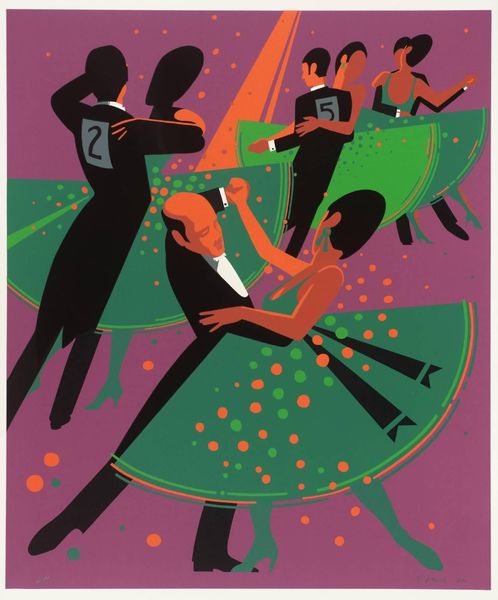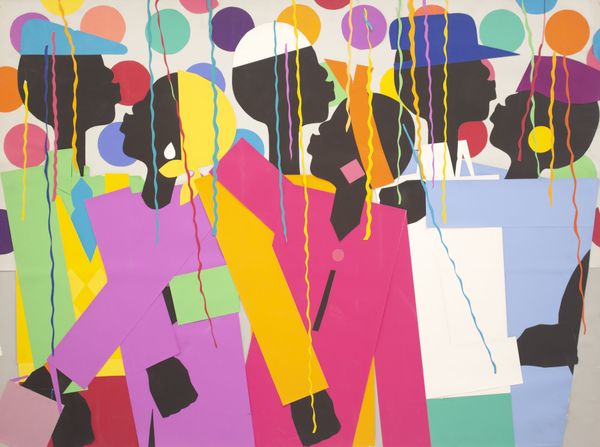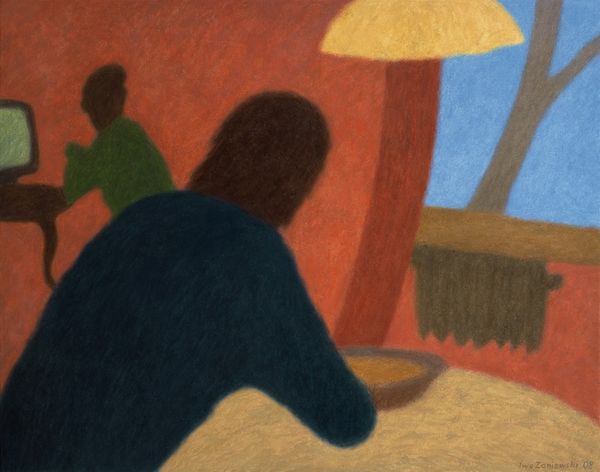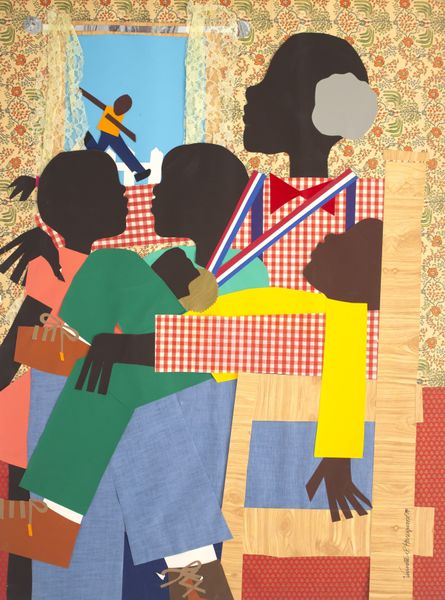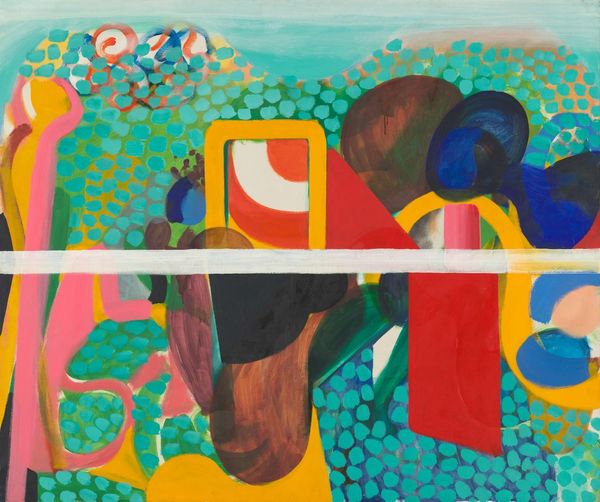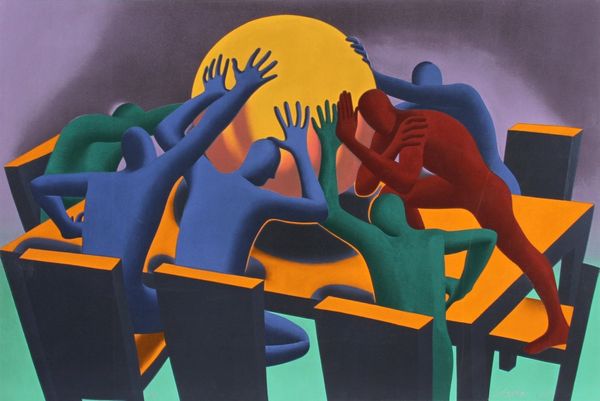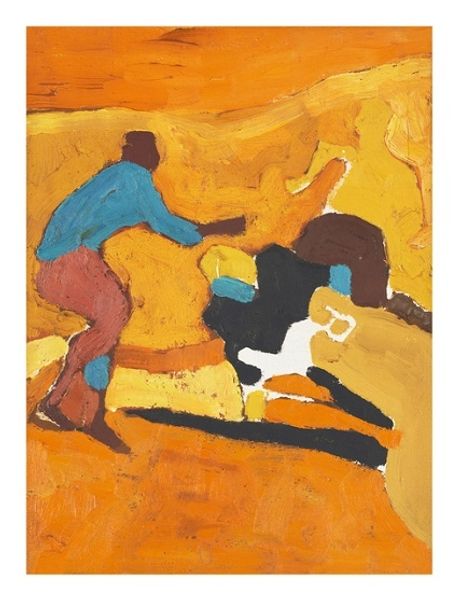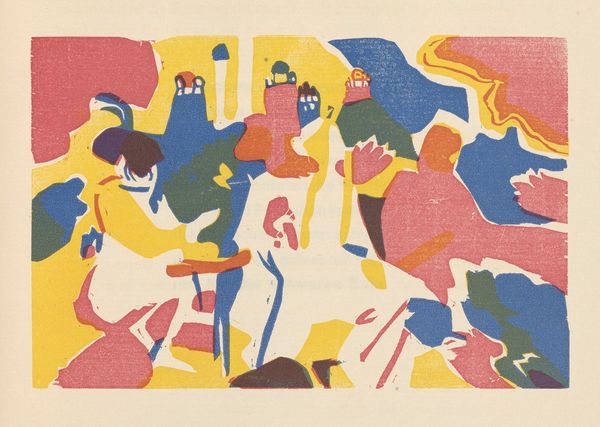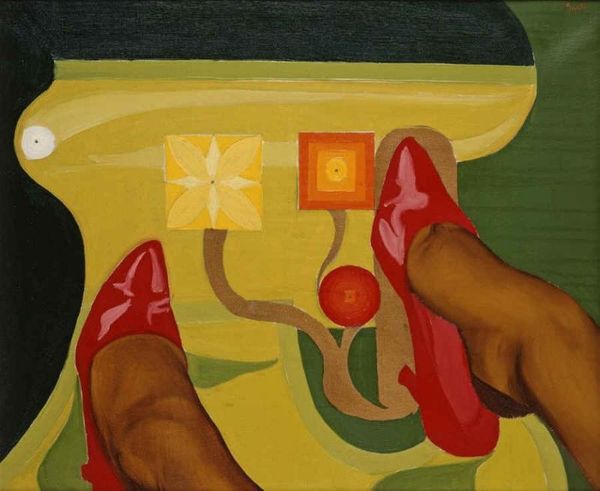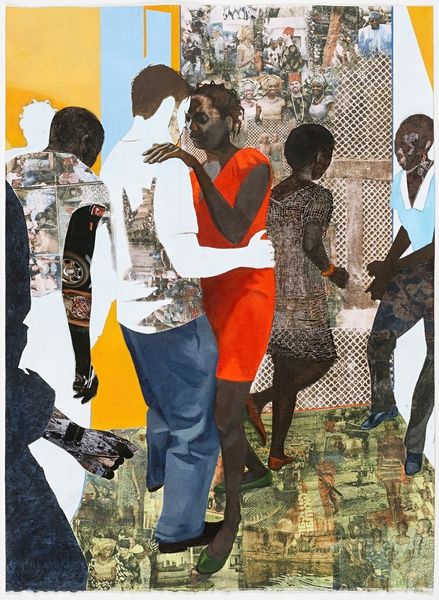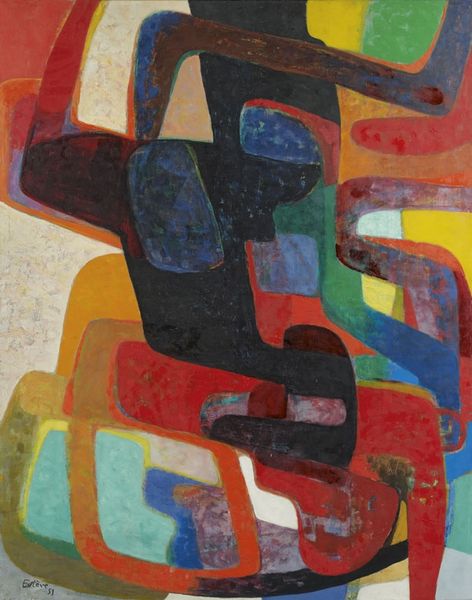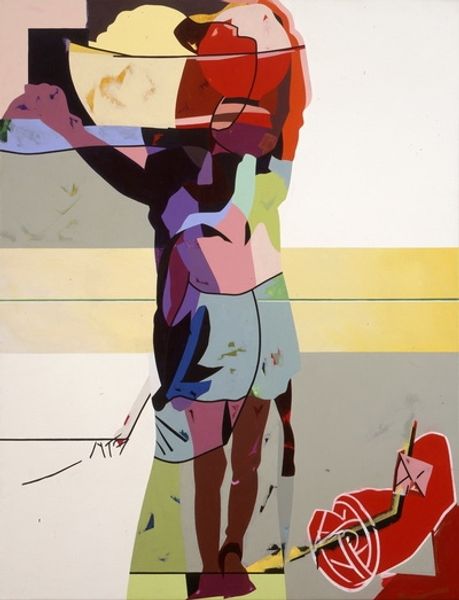
Copyright: Varnette Honeywood,Fair Use
Curator: Here we have Varnette Honeywood’s "Tag," a striking acrylic painting completed in 1984. Its use of figuration, combined with those bold, geometric shapes, gives it an almost iconic feel. What's your immediate take? Editor: Immediately, I'm struck by the dynamism. There's an unmistakable sense of forward momentum, a powerful, graphic rendering of movement. The simplified forms contribute to this – clean lines and planes of color – which give it a sort of flattened perspective that focuses attention on the depicted action. Curator: Yes, absolutely. And I think the context in which it was created matters. The 80s was such an important time for Black artists asserting their presence, demanding representation in art and popular culture. Honeywood’s art belongs in that larger political movement. Editor: Definitely. When looking at these figures, I notice how their features are intentionally devoid of specific detail. In their relative anonymity, there’s a feeling that they are not simply representing individual people, but acting as avatars, for many black youth who negotiate social codes of belonging and competition. What is 'tag,' but a game built on constant negotiations? Curator: An excellent observation! It resonates with discussions around art in public spaces. Take street art. How art and even performance or competition get embedded in the landscape, influencing identity and collective experience, like with "Tag," for example. Editor: The color choices are also striking. The high-key blues, oranges, and yellows really pop, and feel intentionally joyful. It stands in stark contrast to some other, more sobering depictions of Black youth. Curator: And it pulls from pop art, of course, which emerged after Honeywood’s own participation in the Black Arts Movement, bringing more vibrant colour to themes related to identity, pride, and personal history. Editor: It's interesting how the painting captures that sense of youthful energy, even defiance, within this framework of popular culture. I keep considering this tension, between the subjects and their almost facelessness, that demands a sense of attention and understanding in our interpretation. Curator: Well, in the end, it invites us to reflect on representations of black childhood. Hopefully our chat encourages others to look at the painting more deeply. Editor: Couldn't agree more. There’s so much to consider beyond its captivating surface, really a lot more under the surface, too.
Comments
No comments
Be the first to comment and join the conversation on the ultimate creative platform.
